Innovative Strategies to Boost Daily Water Intake


Intro
Hydration plays a pivotal role in maintaining overall health, yet many individuals struggle to consume adequate amounts of water daily. The human body is composed of approximately 60% water, highlighting its vital importance for functions such as temperature regulation, joint lubrication, and nutrient transportation. Understanding innovative strategies to enhance water consumption can lead to better hydration habits and improved well-being.
To address the challenges many face, this narrative will dissect several methods to increase water intake. From dietary suggestions to technological solutions, each approach can provide practical ways to incorporate more water into daily routines. The intersection of habit formation and mindful consumption will serve as a backbone in this exploration.
The Importance of Hydration
Hydration is essential for maintaining optimal health and well-being. Water plays a critical role in numerous bodily functions. It aids in the regulation of body temperature, supports nutrient transportation, and is vital for digestion. Furthermore, adequate water consumption can enhance cognitive function and overall physical performance.
This section will provide a deeper understanding of hydration needs and the adverse effects resulting from dehydration.
Understanding Hydration Needs
Each person's hydration needs can vary based on factors such as age, sex, weight, activity level, and climate. Generally, the common recommendation is to drink at least eight 8-ounce glasses of water daily, often referred to as the "8x8 rule." However, this is a basic guideline and can differ significantly for individuals.
- Age and Gender: Adult men typically need about 3.7 liters of total water each day, while adult women should aim for about 2.7 liters according to the National Academies of Sciences.
- Activity Level: Those who are more physically active or exercise regularly will require additional water to replace fluids lost through sweat.
- Climate: Hot or humid weather increases the need for fluid intake, as the body loses more water through sweat.
To understand hydration needs, it is also important to listen to your body. Thirst is a clear signal of dehydration, but one should also monitor urine color as an indicator of hydration levels. A pale yellow color typically signals adequate hydration, whereas dark urine may suggest a need for water intake.
Effects of Dehydration
Dehydration can have serious consequences on health. It can lead to various physical and mental impairments. Some common effects include:
- Fatigue and Dizziness: Dehydration often results in feelings of low energy, which may impair motivation and focus.
- Headaches: Many individuals experience headaches due to insufficient water intake. This is because dehydration can lead to changes in the levels of various chemicals in the brain, causing pain.
- Digestive Issues: Water is essential for digestion. Lack of water can lead to constipation and other digestive problems.
- Kidney Stones: Chronic dehydration increases the risk of kidney stone formation, as there is less water to dilute substances that can form stones.
Additionally, prolonged dehydration can compromise immune function and may contribute to overheat conditions like heat exhaustion or heatstroke. It is clear that water is not just a simple refreshment; it is a critical component for life.
"Hydration is the key to performance and health. Ignoring hydration needs is a risk not worth taking."
By understanding hydration needs and the effects of dehydration, individuals can take proactive steps towards increasing their water intake. This awareness lays the foundation for developing effective strategies that will be explored in later sections.
Setting Realistic Water Goals
Setting realistic water goals is vital in promoting consistent hydration. Without clear objectives, it's easy to become overwhelmed or discouraged by the effort needed to increase water intake. Establishing achievable targets helps individuals understand their unique hydration needs and paves the way for positive habits. This section breaks down the process, focusing on two important aspects: assessing personal needs and creating a daily routine.
Assessing Personal Needs
Understanding one's hydration needs is the foundation of setting realistic water goals. Each person's requirements differ due to various factors such as weight, age, climate, and physical activity levels. To assess personal needs, consider the following steps:
- Body Weight: As a general guideline, many nutritionists recommend drinking about half your body weight in ounces daily. Adjust this based on other influences.
- Activity Level: Those engaged in regular exercise or physically demanding work require more fluids. About 1.5 to 2 additional cups may be necessary after workouts.
- Climate Conditions: Hot weather can increase fluid loss through sweat. In such situations, thirst may not be the best indicator alone. Being proactive about water intake is crucial.
These factors should guide goal-setting, ensuring that hydration remains a priority without becoming a chore.
Creating a Daily Routine
Developing a daily routine for water intake can streamline hydration habits. It transforms water consumption from a task into a natural part of one’s day. Here are some practical considerations:
- Schedule Water Breaks: Set specific times during the day to drink water, such as before each meal or during breaks at work. Regular intervals help integrate hydration consistently.
- Use Visual Cues: Placing water bottles in visible locations serves as a reminder. This can be on work desks, kitchen counters, or even in the car.
- Before Meals: Make it a habit to drink a glass of water before meals. This not only ensures adequate intake but also aids in digestion.
- Track Progress: Use a water-tracking app or journal. Keeping a record encourages accountability and allows for adjustments if necessary.
Creating a structured plan simplifies the process. With practice, drinking the recommended amount of water daily becomes automatic, supporting overall health.
Incorporating Water into Meals
Incorporating water into meals represents not just a method for enhancing hydration but also a practical approach to increasing overall water intake. Food contributes significantly to daily hydration levels. In fact, some studies suggest that nearly 20% of daily water intake can come from food, especially those with high moisture content. This method allows individuals to consume water not just via beverages, which can sometimes feel forced or monotonous, but through diverse culinary experiences. This section will explore how individuals can effectively leverage meal preparation to boost hydration while enhancing flavor and nutritional value.
Infused Water Recipes
Infused water has grown in popularity due to its ability to elevate the mundane into the delightful. The process of infusing water with herbs, fruits, or vegetables introduces subtle flavors, making hydration more appealing. Here are some straightforward recipes to create infused water:
- Cucumber Mint: Combine sliced cucumber and a few mint leaves in a pitcher of water. Let it sit in the refrigerator for a few hours. This refreshing combination is not only hydrating but also serves as a palate cleanser during meals.
- Strawberry Basil: Add sliced strawberries and a handful of fresh basil leaves to a jug of water. The sweetness of the strawberries mixed with aromatic basil yields a pleasing taste experience that can encourage increased consumption of water.
- Citrus Zest: Utilize a mix of lemon, lime, and orange slices. This zesty blend provides a burst of refreshing flavor and promotes the rich vitamin C content, which is beneficial for overall health.
Infused water allows for creativity, enabling individuals to experiment without restrictions. This approach could result in a habit of drinking more fluids, as each glass becomes an opportunity to enjoy and savor.
Foods with High Water Content
Certain foods can significantly help in meeting daily hydration goals. Consuming these foods not only promotes hydration but also contributes to the daily intake of essential nutrients. Here’s a list of some notable options:
- Watermelon: Comprising around 92% water, watermelon is an excellent hydrating food and is packed with vitamins A and C.
- Cucumbers: Similar to watermelon, cucumbers consist of approximately 95% water and provide unique phytonutrients such as quercetin, which may offer health benefits.
- Tomatoes: With about 95% water content, tomatoes are versatile in cooking and snacking. They are high in lycopene, a powerful antioxidant.
- Strawberries: These tasty fruits have a water content of about 91%. They can be a delightful addition to meals or served as snacks.
- Spinach: Leafy greens, particularly spinach, contain about 91% water and are rich in various vitamins and minerals.
Incorporating these foods into daily meals can enhance hydration without consciously trying to increase water intake. This method also fosters a diet rich in various nutrients, allowing for a holistic approach to health.
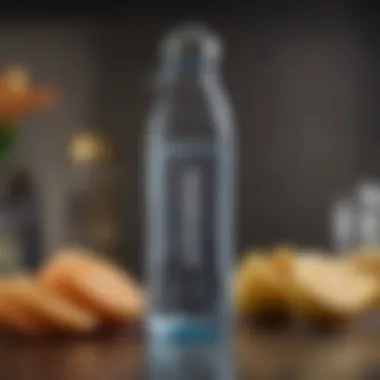
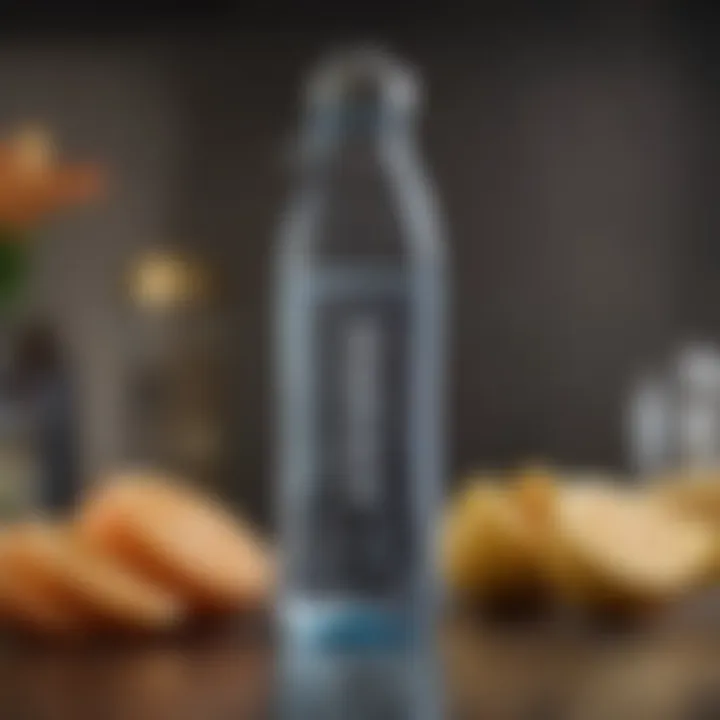
"By increasing the water content in meals through infused drinks or hydrating foods, individuals can transform their dietary habits, ensuring they meet hydration goals effortlessly."
Overall, enhancing hydration through meals is a sustainable strategy that offers immediate benefits for health and wellness. Incorporating water-rich ingredients lends itself to a nutrient-dense diet while satisfying hydration needs.
Utilizing Technology for Hydration
In the modern era, technology has permeated every aspect of our lives, including health and hydration. As many individuals struggle to meet their daily water intake goals, utilizing technological solutions can play a pivotal role in increasing water consumption. These tools not only simplify tracking hydration but also introduce compelling ways to encourage regular water intake. Understanding how to leverage technology can lead to meaningful changes in hydration habits.
Mobile Apps for Tracking Water Intake
Mobile applications designed for water intake tracking provide an interactive avenue for users to monitor their hydration. These apps often feature user-friendly interfaces, allowing individuals to log their water consumption with ease. Many of them come equipped with customizable reminders, ensuring that users receive notifications at designated times throughout the day to encourage them to drink water. Such reminders can help in fostering a consistent drinking pattern.
Some notable features of these apps include:
- Hydration Goals: Users can set personalized hydration targets based on factors like weight, activity level, and climate.
- Progress Tracking: Visual graphs and percentage completion bars provide a clear view of daily intake progress, motivating users to meet their goals.
- Integration with Wearable Devices: For those who own smartwatches or fitness trackers, many apps sync seamlessly, allowing for automatic updates on hydration as part of an overall health profile.
Research shows that regular engagement with these applications significantly boosts water consumption. This is especially valuable for people who lead busy lives and might forget to drink water during the day.
Smart Water Bottles
Smart water bottles represent another innovative strategy for enhancing hydration habits. Unlike traditional water bottles, these high-tech alternatives often come with built-in sensors that monitor fluid intake. They provide real-time data on how much water is consumed throughout the day.
Some common features found in smart water bottles include:
- LED Notifications: Many bottles use lights to remind users when it's time to drink, employing gentle alerts that fit well into daily routines.
- Capacity Tracking: Users can check the amount of water left and estimate how much more they should consume to meet their hydration goals.
- Mobile Connectivity: Certain bottles sync with mobile applications, allowing detailed insights on hydration that can be shared with health professionals if needed.
The design aspect of smart water bottles also caters to different lifestyles. They are often insulated, durable, and aesthetically pleasing, making them suitable for various environments, whether in a gym, at work, or while traveling. This accessibility and convenience facilitate a higher water intake, as individuals are more likely to carry a bottle that suits their needs.
"Using technology for hydration is not only about convenience; it is about transforming routines into healthier habits that recognize the vital role water plays in overall wellness."
Behavioral Strategies to Drink More Water
Behavioral strategies play a crucial role in increasing water consumption. Understanding how habits form and recognizing triggers can lead to effective changes in daily hydration practices. These strategies do not require drastic lifestyle overhauls but focus instead on creating small, manageable adjustments. When implemented consistently, these tactics can significantly increase daily water intake and promote overall health benefits.
Habit Stacking
Habit stacking is a technique that pairs a new habit, such as drinking more water, with an existing one. This method uses the natural flow of one habit to ease into another. For example, you might decide to drink a glass of water every time you finish a meal. This simple approach not only serves as a reminder but also creates a routine.
- Identify Existing Habits: Start by listing routines already present in your day, like brushing teeth, checking emails, or sitting down for lunch.
- Choose a Trigger: Select one of these behaviors as a trigger for your new habit. For instance, drinking water immediately after brushing your teeth can intertwine hydration into your routine.
- Be Consistent: The key to habit stacking is repetition. By merging the new habit with daily routines, the act of drinking water becomes automatic over time.
Habit stacking not only increases water consumption but also builds a larger foundation for healthier lifestyle choices. As these small habits accumulate, individuals may discover other areas of improvement in their lives.
Reminders and Cues
Utilizing reminders and cues can effectively boost water intake throughout the day. In our busy lives, it is easy to forget the simple act of drinking water. By establishing external reminders, hydration can become a priority.
- Use Technology: Many mobile applications can track water intake and send alerts when it’s time to hydrate. Apps provide graphical insights which can motivate users to maintain proper hydration levels.
- Visual Cues: Place water bottles in visible locations, such as on your desk or next to your bed. The presence of water in sight can prompt you to drink more frequently.
- Set Timers: Instead of waiting for thirst to strike, setting timers as cues can encourage regular intervals of drinking. For instance, setting an alarm every hour can remind you to have a small sip.
Reminders and cues are integral for establishing a consistent routine. They create a supportive environment that ultimately nurtures better hydration habits.
Summary
Behavioral strategies, through habit stacking and the use of reminders, are practical methods to enhance water consumption. They focus on small changes rather than major lifestyle shifts, making them accessible to everyone. By integrating these practices into daily life, individuals can effectively increase their water intake, ensuring adequate hydration for improved health.
Choosing the Right Water
Choosing the right water is crucial for maintaining proper hydration. The term "right water" might refer to several factors, including quality, source, and personal preferences. Understanding these elements can lead to better choices that not only enhance hydration but also support overall health. Knowing how to select water wisely can have benefits such as improved taste, enhanced benefits from minerals, and overall satisfaction, which encourages more frequent consumption.
Understanding Water Quality
Water quality is a key component in hydration. It refers to the characteristics of water that affect its suitability for drinking. Several parameters define water quality, including:
- Chemical Composition: This includes the presence of minerals like calcium, magnesium, and sodium, which can have health benefits.
- Contaminants: Bacteria, viruses, heavy metals, and chemicals can impact health. Regular testing of water sources helps to ensure safety.
- Taste and Odor: Water that tastes or smells bad can discourage consumption. It's important to choose water that is pleasant to drink.
When analyzing water quality, one should look for local reports or resources that provide necessary information about water safety and purity.
Bottled vs. Tap Water
The debate over bottled and tap water often arises when choosing how to stay hydrated. Each has its own advantages and disadvantages:
Bottled Water
- Convenience: Easy to transport and consume on the go.
- Variety: Many flavors and types that can accommodate individual tastes.
- Perceived Purity: Some believe bottled water is cleaner than tap water; however, that is not always the case.
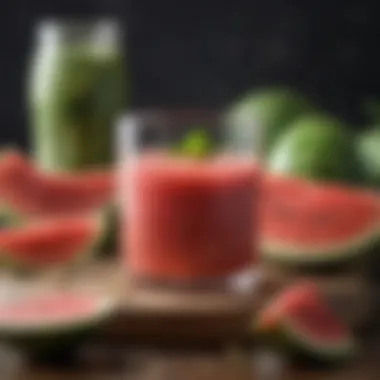
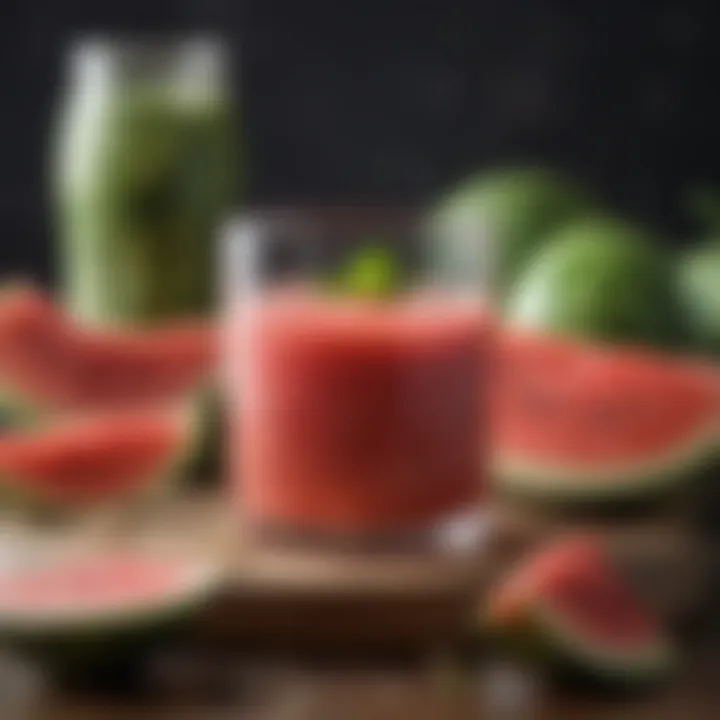
Tap Water
- Cost-Effective: Much cheaper than purchasing bottled water regularly.
- Environmental Impact: Reduces plastic waste associated with bottled water.
- Accessibility: Readily available in homes and public spaces.
It's important to know the quality of local tap water. In many places, it is treated and tested regularly, making it a safe choice.
Overall, the decision between bottled and tap water should be based on personal preferences, quality, and convenience. Understanding the differences can lead to healthier hydration choices.
Overcoming Barriers to Hydration
In the pursuit of better hydration, it is crucial to understand that various obstacles can impede one's ability to consume adequate water. Overcoming barriers to hydration involves identifying these challenges and providing effective solutions that can help individuals integrate more water into their lives. By breaking through these barriers, people can improve their overall health and well-being.
Addressing Taste Preferences
One common barrier to water consumption is the perception of taste. Many people find plain water unappealing, which can lead to reduced intake. This is particularly notable when individuals have become accustomed to sugary drinks or flavored beverages. To address this, it's important to explore alternatives that enhance the flavor of water without adding excessive calories or sugar.
- Infused Water: Adding fruits like lemon, cucumber, or berries can create a refreshing beverage that encourages more frequent drinking.
- Herbs and Spices: Ingredients like mint or ginger offer distinctive flavors and can positively affect taste preferences.
- Sparkling Water: For those who enjoy carbonation, sparkling water can be an enticing choice, making regular hydration feel more indulgent.
Incorporating these options allows individuals to personalize their hydration experience, making it less of a chore and more enjoyable. This strategy can help break the negative cycle of disinterest in drinking water.
Managing Busy Lifestyles
In today’s fast-paced world, managing busy lifestyles presents another significant barrier to hydration. People often prioritize work and tasks over self-care, including proper hydration. To combat this, individuals can adopt simple strategies that integrate water consumption into their routines with minimal disruption.
- Portable Water Bottles: Carrying a reusable water bottle can serve as a constant reminder to drink more water. A visually appealing design may encourage individuals to use it more frequently.
- Scheduled Reminders: Setting alarms or reminders on mobile devices can prompt individuals to pause for a moment and hydrate throughout the day.
- Water Intake Goals: Keeping track of water intake using mobile apps or logs can help individuals set and achieve daily hydration targets without much effort.
By implementing such strategies, busy individuals can overcome the challenge of neglecting hydration, ensuring they remain adequately hydrated even amid their hectic schedules.
"Addressing barriers to hydration is not just about drinking more water; it's about making it a seamless part of daily life."
By recognizing and systematically addressing these barriers, individuals can take meaningful steps toward improving their hydration, ultimately enhancing their lifestyle and health.
Social Aspects of Drinking Water
Understanding the social aspects of drinking water is essential when considering strategies to increase hydration. Water consumption often takes place in social settings, making it important to recognize how these interactions can influence individual water intake. By instilling a culture of hydration within families, friendships, and workplaces, it becomes easier for individuals to stay committed to their hydration goals. Additionally, social influences can motivate better drinking habits through shared experiences and peer encouragement.
Engaging with others around the concept of hydration helps to create a supportive environment. This can involve setting communal hydration challenges, encouraging each other to meet daily goals, or simply making water more accessible during gatherings. By emphasizing the collective nature of hydration, individuals may feel more accountable and motivated to drink more water.
Encouraging Family and Friends
Family and friends play a vital role in fostering healthy habits, including adequate water consumption. When family members prioritize hydration, it creates a framework for everyone to follow suit. Simple changes can promote this behavior:
- Hydration Stations: Designate specific areas in the home, such as the kitchen or dining room, where water is readily available. Use attractive water pitchers or containers that invite frequent refills.
- Shared Goals: Create family hydration challenges, such as aiming for a set amount collectively over the week. This creates a fun competition that encourages everyone to participate.
- Regular Reminders: Encourage family members to remind each other about drinking water, perhaps during meals or family activities. Simple nudges can be effective in making sure hydration remains a priority.
Workplace Hydration Initiatives
The workplace environment can significantly influence hydration habits. Many employees engage in long hours at their desks, which often leads to neglecting their water intake. Implementing hydration initiatives in the workplace can foster a culture that values health and wellness. Here are some effective strategies:
- Water Coolers and Dispensers: Ensure that there are easily accessible water coolers or dispensers throughout the office. Being nearby to water makes it easier to drink more.
- Organized Events: Host hydration-themed events such as awareness days or challenges that encourage employees to drink more water. This could include contests with prizes for those who meet their hydration goals.
- Educational Workshops: Workshops can shed light on the importance of hydration, especially for productivity and overall health. Equipping employees with knowledge allows them to understand the benefits and implement changes effectively.
Having a supportive environment for hydration, both at home and work, increases the likelihood of maintaining proper water intake.
By recognizing the social aspects of drinking water, individuals can harness the influence of their immediate circles and make hydration a shared priority. This way, the journey towards improved water consumption becomes both easier and more enjoyable.
Evaluating Progress
Evaluating progress in increasing water consumption is crucial to ensuring that hydration goals are met effectively. Tracking one’s intake and adjusting behaviors based on real-time feedback can help maintain motivation and adherence to hydration strategies. When individuals actively engage in this process, they not only enhance their physical health but also build a more conscious relationship with their drinking habits.
This exercise in self-evaluation serves several purposes. Firstly, it offers tangible evidence of how well one is doing in achieving set hydration goals. By understanding daily habits, individuals can identify patterns, such as times of the day when they fall short in their water consumption. Additionally, this analysis provides insight into how lifestyle changes affect overall hydration levels. Evaluating progress can also highlight development areas where strategies need to be refined or altered.
The act of tracking water intake, adjusting goals, and celebrating incremental victories can reinforce a positive feedback loop, encouraging further commitment to good hydration practices.
Tracking Daily Intake
Keeping a record of daily water intake is a foundational step in evaluating progress. This can be done through various methods, such as using mobile apps or a simple journal. Adopting a structured approach allows individuals to visualize their consumption habits and recognize trends over time.
Here are some benefits of tracking daily intake:
- Awareness: By consistently noting how much water is consumed, one becomes more aware of their hydration levels. This heightened awareness can prompt efforts to increase intake if necessary.
- Goal adherence: Writing down intake helps in adhering to daily hydration goals. When goals are visible, they become more actionable.
- Identifying triggers: Keeping track allows individuals to spot triggers for dehydration, like busy workdays or lack of reminders, enabling proactive adjustments.
In addition, many apps provide analytics and reminders, making it easier to stay on target. Adjusting drinking habits can happen more seamlessly when individuals have powerful tools at their disposal, thus simplifying the path to hydration.
Adjusting Goals as Needed

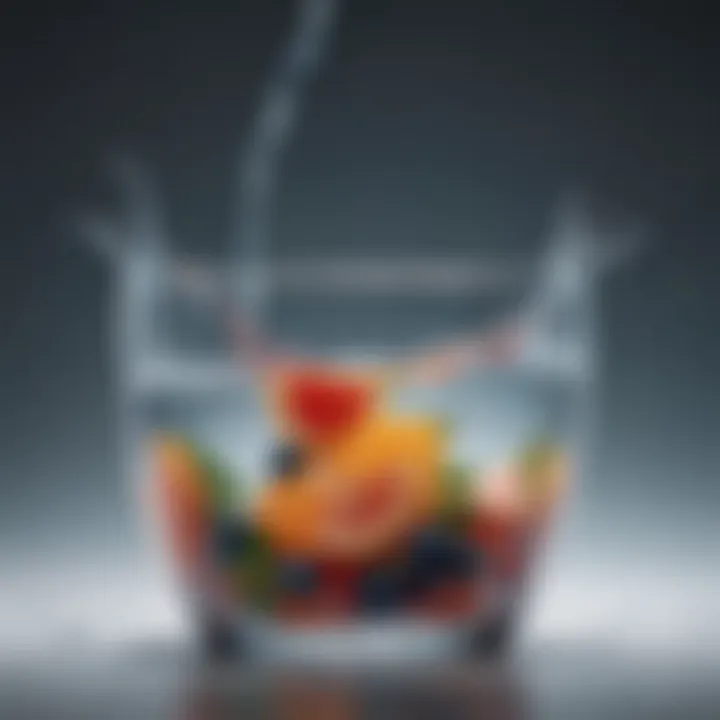
The importance of flexibility in hydration goals cannot be understated. As people become more attuned to their hydration needs, they may find that their initial goals were either too ambitious or too lax. Regular evaluation of progress should involve the reassessment of these goals, ensuring they remain aligned with current health conditions and lifestyle changes.
Considerations when adjusting goals include:
- Changes in physical activity: If someone increases their exercise regimen, their water needs will likely increase. Adapting goals to reflect a more active lifestyle is critical to staying properly hydrated.
- Environmental factors: Hot weather or travel can increase the need for water. One may need to adjust their goals based on season changes or different climates.
- Feedback from the body: Listening to body signals is essential. Fatigue, headaches, or dry skin can indicate insufficient hydration, prompting an immediate goal adjustment.
In essence, evaluating and revising hydration goals fosters a more customized and effective hydration strategy. This adaptability enables individuals to thrive in their efforts to maintain optimal hydration consistently.
Addressing Common Myths About Water
Understanding the various myths surrounding hydration is essential for anyone looking to improve their water consumption. Many individuals operate on misconceptions that may hinder their efforts to stay properly hydrated. Debunking these myths allows for a clearer perspective on the significance of water in our daily lives. It also empowers individuals to make informed decisions regarding their hydration needs. Misunderstandings about water can lead to neglecting hydration, which may affect overall health and wellbeing.
Debunking Hydration Myths
Several myths about hydration persist, often contributing to confusion. One common notion is that every person must drink eight glasses of water daily. This idea can mislead people into thinking that there is a one-size-fits-all approach to hydration. The truth is, individual water needs vary based on factors such as age, activity level, climate, and overall health. While some people may require more water, others might need less.
Another prevalent myth is that only plain water counts towards daily hydration. In reality, fluid intake can come from various sources including food. Foods like cucumbers, watermelon, and oranges possess high water content. Consuming these can significantly contribute to daily hydration levels.
Moreover, there is the belief that if one waits until feeling thirsty, it means they are already dehydrated. Thirst is a reliable indicator, but relying solely on it may not suffice, especially during intense physical activity or heat. Staying ahead of thirst can help maintain optimal hydration levels.
Separating Fact from Fiction
Recognizing factual information from fiction is crucial in shaping healthy hydration habits. Let's look at some clarifications:
- Myth: You must drink eight glasses of water a day.
Fact: Needs vary based on individual factors. - Myth: Caffeinated drinks dehydrate you.
Fact: Moderate coffee and tea consumption can contribute to daily hydration. - Myth: Drinking water helps you lose weight.
Fact: Water can aid in weight management when part of a balanced diet. - Myth: Only water hydrates effectively.
Fact: Many foods and beverages provide hydration.
By shining light on these myths, individuals can make educated choices about their hydration practices. Addressing these myths empowers a more positive approach to water consumption. Understanding hydration is a key factor in promoting better health.
"The first step toward improving water intake is recognizing and addressing prevalent myths that often lead to confusion."
In summary, dispelling hydration myths fosters a more informed perspective on how to increase water intake effectively. Being aware of these common misconceptions can encourage individuals to engage with their hydration needs thoughtfully. This clarity can lead to a higher likelihood of meeting personal hydration goals.
Hydration and Physical Activity
Hydration is a critical component of maintaining optimum physical performance and overall health. Active individuals, whether they engage in sports or regular exercise, require adequate water intake to support bodily functions and enhance their athletic performance. Recognizing the specific water needs during physical activity is paramount for maximizing endurance, recovery, and overall well-being.
Before exploring the facets of hydration for active individuals, it is essential to understand that water plays multiple roles in the body, including regulating body temperature, lubricating joints, and transporting nutrients. For active individuals, neglecting hydration can reduce energy levels and impair physical performance. As exercise intensity increases, so do the body's fluid requirements.
Water Needs for Active Individuals
Active people show specific hydration needs that depend on multiple factors, including exercise type, duration, and individual sweating patterns. Some key elements impacting water needs are:
- Intensity of Activity: Higher intensity workouts elevate sweat rates, leading to increased fluid loss.
- Duration: Longer workouts demand more frequent hydration to replenish lost fluids.
- Environmental Conditions: Hot, humid, or high-altitude environments exacerbate fluid loss through sweat.
Establishing a tailored hydration strategy is beneficial. For most active individuals, drinking approximately 17-20 ounces of water two hours before exercise is advisable. During workouts, aim for 7-10 ounces every 10-20 minutes. Post-exercise, replacing lost fluids can aid recovery.
Pre- and Post-Exercise Hydration
Hydration strategies should be intentional, as the timing of fluid intake can enhance performance and recovery significantly. Here are some important considerations:
- Pre-Exercise Hydration: Ensuring adequate hydration before physical activity helps maintain performance levels. Drinking sufficient water prior to exercise aids in preparing the body for the demands ahead.
- During Exercise: Staying hydrated while working out is critical. Not only does it prevent dehydration, but it also supports endurance and function, allowing individuals to maximize their efforts without feeling fatigued.
- Post-Exercise Hydration: After physical activity, the body needs to recover. Rehydrating with water or electrolyte mixes is essential for restoring lost fluids. This is a key time to evaluate fluid loss through sweat and adjust water intake accordingly.
Proper hydration practices can significantly enhance athletic performance and recovery.
Concluding Thoughts on Increasing Water Intake
As we conclude our exploration of water consumption strategies, it is clear that hydration plays a vital role in overall health and wellness. Adequate water intake is not merely a suggestion; it is essential for maintaining bodily functions, optimizing cognitive performance, and preventing dehydration-related complications. Summarizing the key aspects covered in this article is crucial, as it helps us understand the importance of consistent hydration practices.
In this article, we delved into various innovative strategies aimed at increasing water consumption. These methods range from practical adjustments in diet to adopting technological aids, catering to a wide audience. Emphasizing hydration importance not only improves personal health but can create ripple effects in communities as individuals share their new habits.
The benefits of enhanced hydration are numerous. Aside from supporting digestive functions and regulating body temperature, drinking enough water can also aid in weight management. When individuals focus on promoting their hydration, they often experience increased energy levels and better concentration.
Considerations about water sources, quality, and personal preferences must not be overlooked. Addressing these elements can lead to long-term adherence to hydration habits. Choosing the right water, recognizing personal needs, and overcoming obstacles will make hydration more achievable for everyone.
"Staying well-hydrated contributes immensely to a healthy lifestyle. It's not just about drinking x amount daily; it's about doing so consistently and mindfully."
Summary of Key Points
- Understanding Hydration Needs: Recognizes how individual needs vary based on factors like activity level and climate.
- Incorporating Water into Meals: Discusses how integrating water-rich foods can contribute to overall intake.
- Utilizing Technology for Hydration: Highlights how mobile apps and smart bottles can assist tracking.
- Behavioral Strategies: Introduces methods like habit stacking and reminders that facilitate drinking more water.Relevant
- Social Aspects of Drinking Water: Explains how community engagement encourages better practices.
- Addressing Myths: Directs attention towards separating fact from fiction regarding hydration.
Encouragement for Continued Hydration Practices
Maintaining effective hydration practices is not a fleeting goal but a lifestyle choice. Acknowledge the importance of establishing a routine that centers on proper water consumption. This may involve setting reminders, using apps, or even sharing goals with friends.
It's essential to encourage experimentation with flavors and types of water. It could be infused water, herbal teas, or flavored sparkling water. These alternatives can keep the process enjoyable and engaging. And remember, hydration should feel natural rather than obligatory.
Be mindful of your body; listen to its signals. If you find yourself feeling fatigued, that can often be a subtle hint that more water is needed. Adapting and tuning into these cues can lead to better hydration habits over time.
Ultimately, fostering a culture of hydration contributes not just to personal benefits, but to community health as a whole. Engage in conversations about water consumption, share your journeys, and keep pushing for better practices. Each step taken is a step towards improved health.







